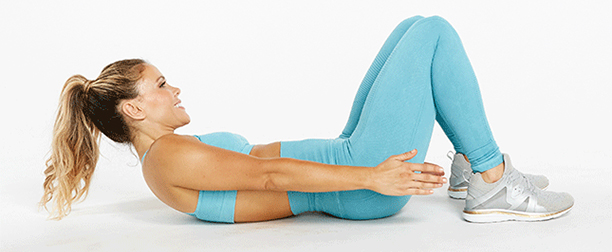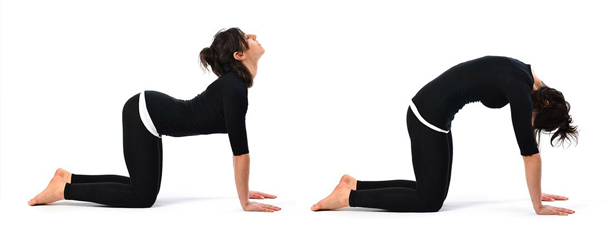6 Stretches to Reduce Back Pain
6 Stretches to Reduce Back Pain
At some point or another, we all have experienced some form of back pain. As I have explained in some of my previous posts, the degree or level of pain that is experienced is subjective to the individual based solely on their own neuro-signature. Simply put, no two people can experience the same quality of pain. That said, from a global perspective on back pain, many who have pain, often feel like they are forever vulnerable to it, once it has happened. This is not the case. In order to #trainthebrain to understand messages received from the low back we must slowly introduce what are called graded exposure exercises to re-educate the brain. When someone initially hurts their back (acute trauma), the typical reaction is to guard and splint the area to avoid any further damage. This may seem like a great survival mechanism, but research has proven that lack of movement to an injured area will prolong the recovery process. The implementation of a backcare plan that consists of controlled, measured movements will assuredly allow you to return to full function in a shorter period of time than weeks of bed rest. Here are 6 simple movements that you should consider doing on a weekly basis to both alleviate and avoid future back issues.

Partial Crunch - Pelvic Tilt Exercise for Back Pain
How to do a Partial Crunch:
• Lie on your back with knees bent and feet flat on the floor.
• As you exhale, contract your abdominal muscles and press the small of your back into the floor.
• Lift your head and shoulders slightly up off the floor as you reach toward your feet with your fingertips.
• Hold for 5 to 10 seconds.
• Relax and return to the starting position.
• Repeat 5 to 10 times.

Cat-Cow Stretch for Back Pain
This simple stretch, sometimes called the cat-cow stretch, gently stretches the muscles of the low back and helps realign the spine and pelvis. It's particularly helpful to ease the pain of a low back strain. Here's how to do it correctly.
How to Do the Cat-Cow Stretch
• Begin on your hands and knees.
• Contract your abdominal muscles. (Try to pull your belly button toward your spine.)
• Slowly round your back, pushing it up toward the ceiling.
• Allow your head to drop forward and curl your pelvis under.
• Hold for 10 seconds. You should feel a gentle stretch in your back.
• Return to the starting position.
• Raise your head up and let your pelvis fall forward as your belly reaches down toward the floor.
• Hold the position for 10 seconds, then return to the starting position.
• Repeat about 5 to 10 times.

Prone Back Extension for Back pain
The prone back extension is a slightly more advanced and intense back stretch. Here's how to safely perform it.
How to Do the Prone Back Extension
• Begin in a face-down position on the floor.
• Slowly lift your torso up; place your elbows under your shoulders and your hands firmly on the ground. Your lower back will be slightly arched.
• Push into the ground and slowly straighten your elbows to increase the extension in your lower back. Go only as far as comfortable, and stop if you experience any pain. You should feel a comfortable, gentle stretch.
• Hold the position for 15 seconds.
• Return to the starting position.
• Repeat 5 to 8 times.

Hip Opener and Lower Back Stretch
How to Do the Hip Opener and Lower Back Stretch
• Begin in a forward lunge position, and drop your left knee to the ground.
• Place your right elbow on the inside of your right knee (not pictured).
• Press your right elbow gently into your right knee and twist your torso to the left.
• Reach your left arm behind you until you feel a gentle stretch in your lower back and right groin.
• Hold the stretch for about 20 to 30 seconds. Release and repeat on the other leg.
You can modify this stretch based on your own anatomy, flexibility, and limitations. Be sure to keep your forward knee over or behind your ankle, not in front of it.

Spinal Twist Stretch for Back Pain
The spinal twist stretch should be done carefully and slowly. In order to avoid overstretching, never force your knees to the ground. Allow your knees to fall only as far as comfortable. Over time you will naturally increase your range of motion in this stretch. Here's how to safely perform the spinal twist stretch.
How to Do the Spinal Twist Stretch
• Lie on your back with your knees bent and feet flat on the floor.
• Slowly let your knees fall toward the floor until a gentle stretch is felt in your spine.
• Hold for 10 seconds and return to the starting position.
• Next, allow your knees to slowly fall to the other side until a gentle stretch is felt.
• Hold for 10 seconds and return to the starting position.
• Repeat several times on each side.
Knees to Chest Stretch for Back Pain
Bringing both knees into the chest is a simple way to release tension in the back and gently stretch the hamstrings. This simple spinal flexion movement is a great way to end a back stretching routine or workout.
How to Do the Knees to Chest Back Flexion Stretch
• Lie on your back with your knees bent and feet flat on the floor.
• Slowly bring your knees toward your chest and gently grasp your legs just below the kneecap.
• Hold this position for 20 seconds and return to the starting position.
• Rest a few seconds and repeat the stretch several times.
Ready to #feelbetter?
You're just a click away from a wicked good massage!
-

60 Minute Massage Gift Card
$170.00 Add to cart -

90 Minute Massage Gift Card
$255.00 Add to cart -

Mini Aer Small Room Air Purifier
$149.00 Add to cart -
Sale!

Thera-Pearl Sports Pack/Hot Cold
Original price was: $14.99.$12.99Current price is: $12.99. Add to cart -

3 Somadome Sessions Gift Card
$135.00 Add to cart -

20 Minute Somadome Gift Card
$45.00 Add to cart -
Sale!

TheraBand® Stretch Strap
Original price was: $19.99.$14.99Current price is: $14.99. Add to cart -

TheraBand CLX Connective Loop
$14.99 Select options
Muscle Strains
A strain, sometimes referred to as a pulled muscle, is a muscle injury produced by excessive tensile stress that causes fibers to tear within the tissue. A muscle strain does not usually result from excess stretch alone, but from a combination of tension and contraction. Muscle strains can develop when excess tension is placed on…
Read MoreShin Splints or Compartment Syndrome?
One of the most common overuse injuries affecting the lower extremity is the condition known as shin splints. While the term shin splints routinely is used, especially among the athletic population, it does not represent a specific clinical pathology. Instead, it describes chronic shin pain resulting from overuse. It occurs in two regions of the…
Read MoreAn Alternative Approach to Stretching
Clinicians, athletes and rehabilitation specialists advocate stretching as a means for injury prevention and treatment. The primary purpose of any stretching technique is to enhance pliability and flexibility in the soft tissues. It is also routinely incorporated with massage in the treatment of pain and injury conditions. There are many different stretching techniques, which all…
Read MoreGanglion Cysts
The highly refined palpation skills of massage practitioners are such that we often identify tissue abnormalities before the client is aware of them. An indication that we should refer a patient for further evaluation is when we identify something we aren’t sure of but know shouldn’t normally be there. One such example may occur with…
Read MoreWhat Is the “End Feel”?
Some of the most valuable assessment information is derived from relatively simple procedures such as passive range-of-motion tests. While many massage practitioners have been exposed to the fundamental concepts of active and passive range-of-motion testing, most have not learned how to use this information effectively in a clinical environment. In this article, we will focus…
Read MoreHow Accurate Is That Test?
Physical assessment is considered one of the most accurate ways to assess function of the locomotor tissues of the body. While we can often gain valuable information about structural problems through high-tech diagnostic procedures like X-ray or MRI, these procedures tell us very little about the function of the tissues involved in creating and limiting…
Read MoreWhen Is It Tendinitis?
Tendinitis is one of the most common diagnoses for soft tissue pain resulting from repetitive motion. As repetitive motion disorders have dramatically increased, so has the incidence of tendinitis. However, recent investigations into the cellular nature of tendon pathologies have brought forth interesting discoveries that may alter the way tendinitis is treated. In this month’s…
Read More- « Previous
- 1
- …
- 18
- 19
- 20


